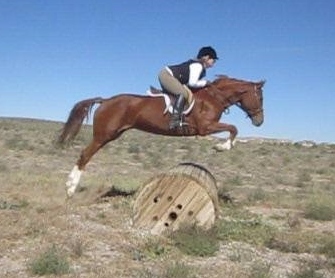Foxhunting is not what it appears

AS THE EDITOR of a national foxhunting magazine, an enthusiast of the sport, a riding teacher, and also an animal-lover, I’m always interested in the knee-jerk reactions to our widely misunderstood pursuit.
While not for every horse and rider, foxhunting can be really beneficial for horses in many disciplines. It teaches them to use their bodies over varying terrain, to go forward and come back quickly, to jump natural obstacles, and to manage distractions—like a bunch of hounds underfoot!
For riders, well, there’s nothing like a few hours of high-speed riding over difficult terrain to secure your seat and leg. Believe me, after a season of foxhunting you’re going to stick like glue in that saddle.
Perhaps it is the formal clothes (which, by the way, have very practical uses) that carry a tinge of classism, or perhaps it is the term “hunting” in the sport’s name. But as someone who loves spending time on horseback going fast and enjoying our wide-open country, there’s no better way to do it than as part of a foxhunt.
Foxhunting is surprisingly affordable. We’re lucky that our two clubs in New Mexico are not expensive to join and you don’t need a fancy horse—just a sane, sound, athletic one.
For those unfamiliar with the sport, foxhunting involves a pack of foxhounds finding and following a scent, not an animal. It has very little to do with the fox (or coyote in our part of the world). Most of the time the coyote is long gone by the time the hounds find the scent.
The chase happens when the hounds find a “hot line”—a recently laid scent. Then they might run on that for a while, and could potentially catch up to a coyote. In the meantime riders gallop along behind field masters, who keep order, ensure everyone is riding safely, and keep the riders far enough away not to interfere with the hounds while also keeping them close enough to see the hounds working.
Coyotes are faster and smarter than hounds. In New Mexico hunting areas, there are so many canyons and rocky places and holes that sometimes we’ll see the coyote, then it will disappear. Poof. A few minutes later, the ole trickster may reappear in an entirely different place.
When and if the hounds should actually catch up to a coyote (usually because it is sick or old), that animal’s death is not unlike falling into the jaws of a wolf pack, and certainly will not add coyotes to the endangered species list. Coyotes are plentiful partly because their natural predator has been largely eliminated from the Southwest.
There is a more complex element to this, concerning wildlife conservation and ranching. Coyotes prey on antelope and calves (as well as Rover and Fluffy). The ranchers who share some of our hunting territories are generally pleased we are there for this reason. The Arizona Fish and Wildlife department has actually requested that the Grand Canyon Hounds hunt an area where the coyotes are devastating the Pronghorn Antelope. Foxhunting is preferable for most of us to alternatives like trapping.
Most people who foxhunt do so because they got tired of arena riding. It is, without a doubt, the most fun you can have on a horse. And the hound work, once you understand it, is fascinating. The hounds sniff the ground, then one might howl, then another, and then all their tails go up and they start to howl (sing!) and run on the scent—that’s pretty amazing. Makes the hair stand up on my arms.
That’s what foxhunters live for. In New Mexico, we’re fortunate enough to have two great foxhunting clubs, each with its own style and personality. If you’d like to try it, contact me and I’ll send you to the right people.
Emily Esterson has been writing about horses, business, and the business of horses for two decades. She is the author of The Ultimate Book of Bits and runs a small private eventing and dressage barn in Albuquerque’s South Valley.
